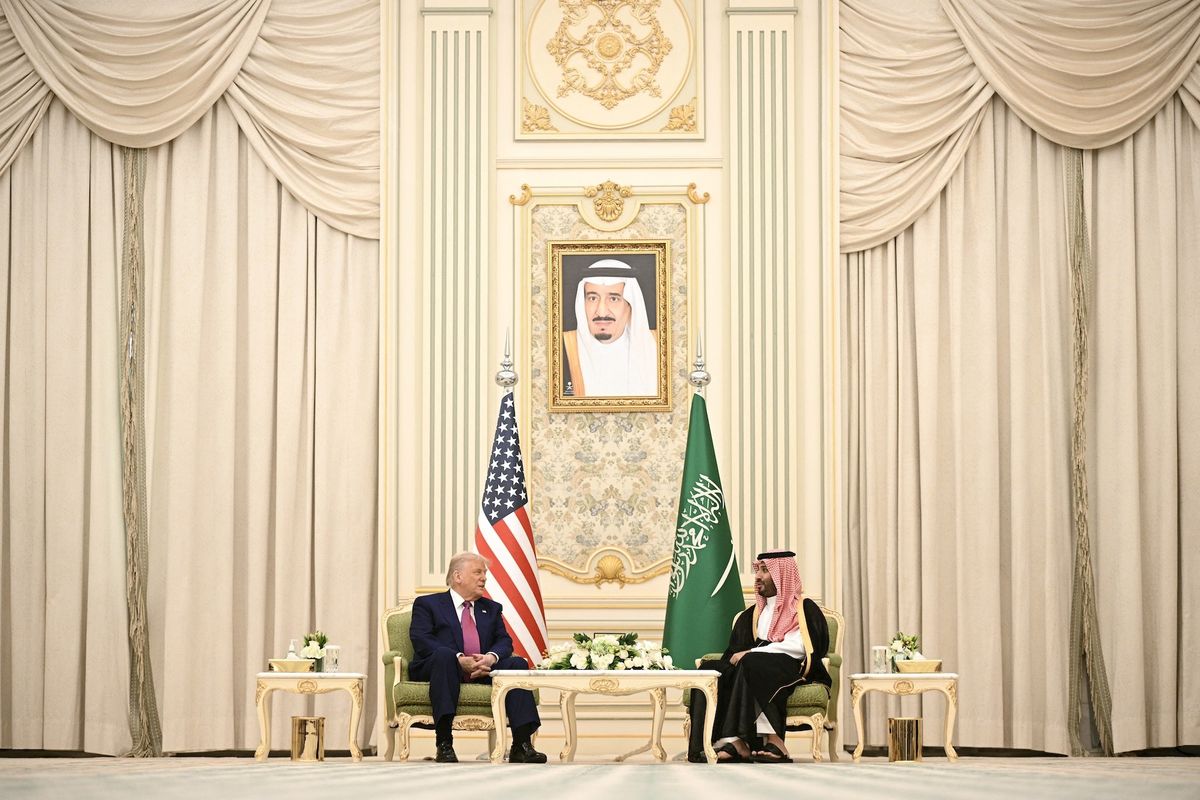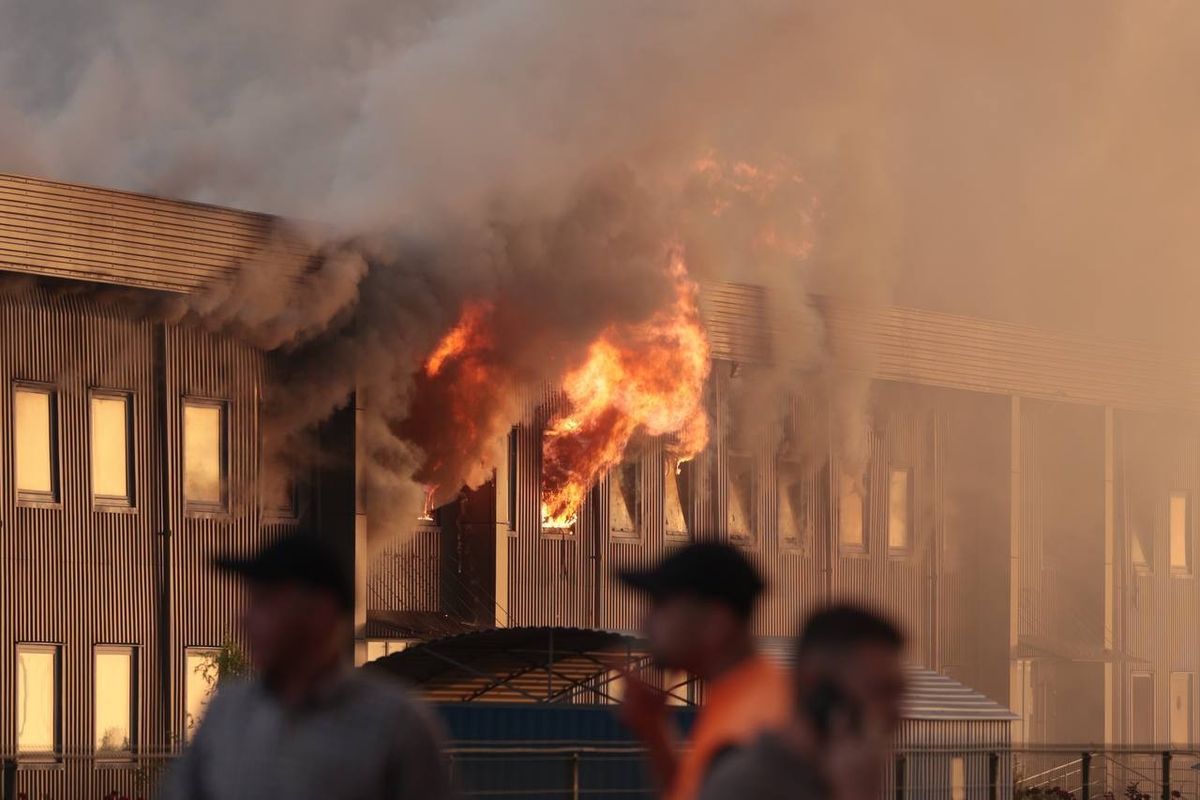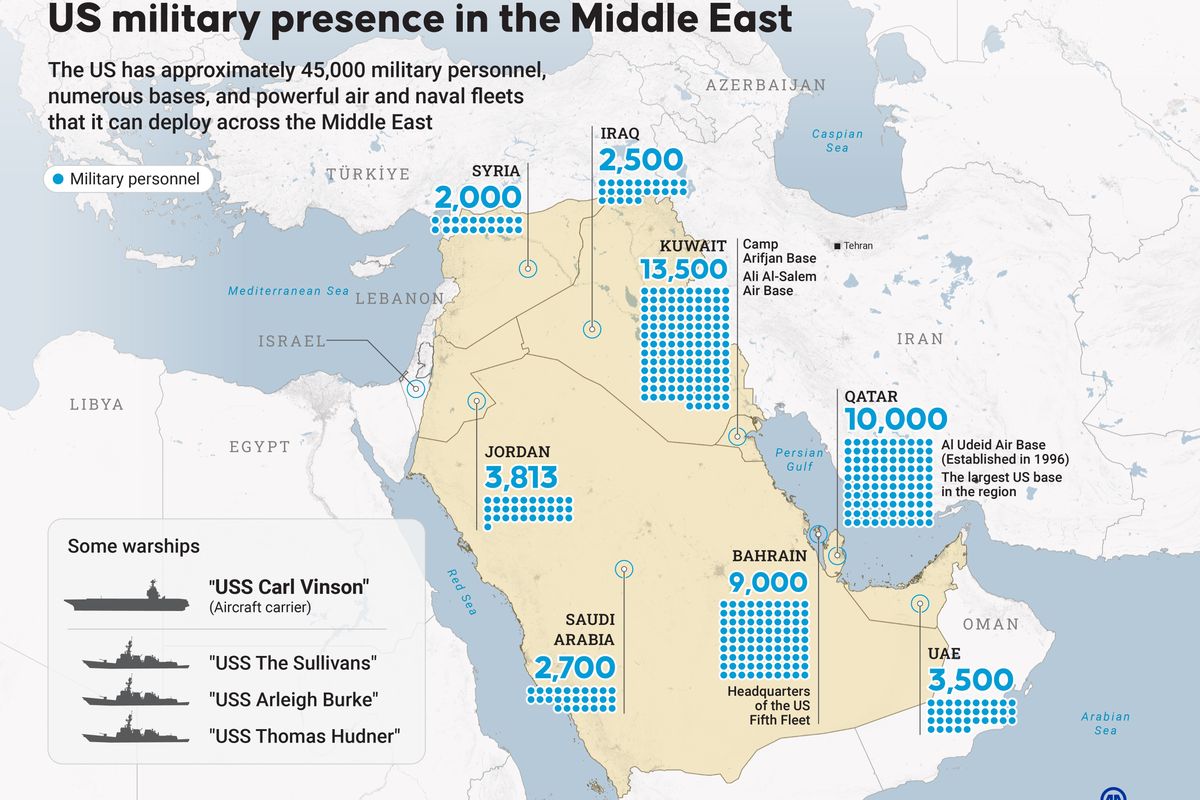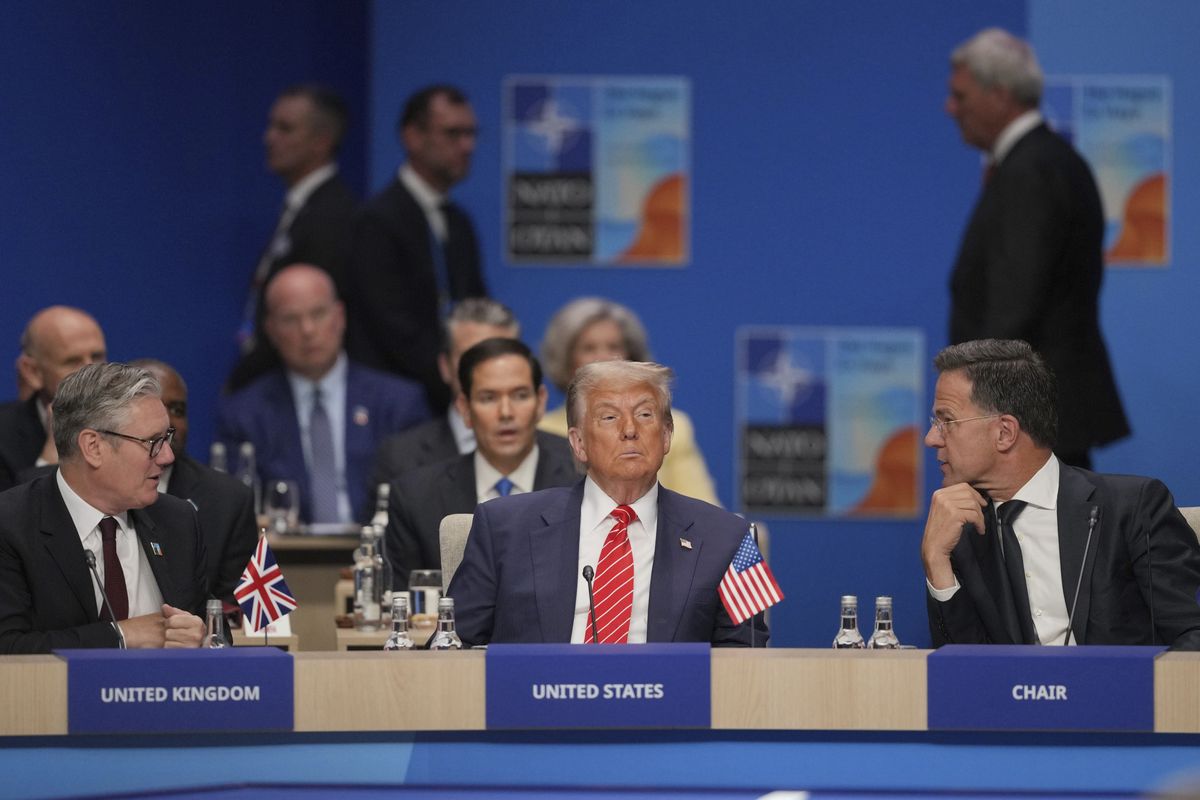President Donald Trump released his $1.5 trillion budget on Thursday, a blueprint that would boost military and border security spending as it makes deep funding cuts to United States diplomacy and foreign aid that experts say could harm national security.
Trump’s 2018 proposal calls for a $54 billion increase for defense, offset by cuts across many agencies — notably a massive 28 percent reduction for the State Department and the U.S. Agency for International Development. Trump’s budget proposal is unlikely to move forward in Congress, where it has drawn criticism across both sides of the aisle.
For the Department of Defense, the proposal “fully repeals the defense sequestration, while providing the needed resources for accelerating the defeat” of ISIS and for “beginning to rebuild the U.S. Armed Forces,” but does not lay out specific breakdowns. The President’s broad-strokes $54 billion proposal has been knocked by budget hawks as not enough of a boost to rebuild and strengthen the military as Trump promised during the campaign.
Senate Armed Services chair Sen. John McCain and his House counterpart Rep. Mac Thornberry are pushing for a $640 billion defense budget, while Trump’s proposed topline is $603 billion.
Trump’s so-called “skinny budget” calls for a $574 billion base budget, and $65 billion in war funding for the Overseas Contingency Operations account. Before President Barack Obama left office, he proposed a boosted 2018 defense budget. Trump’s request represents a 3 percent increase, or $18.5 billion above the level the Obama administration proposed for FY 2018. So it is “only $18.5 billion higher than the spending the DoD already needs to keep the force structure they already have,” Katherine Blakeley, a research fellow at the Center for Strategic and Budgetary Assessments, noted.
That means, if appropriated, $34 billion is already accounted for and allocated to keeping the force structure currently intact, while the rest would be for the “real increase” in the defense priorities Trump has laid out, she said. “$18 billion could just not buy you a lot of new force structure,” she said, adding that, for example, “it’s not enough money to start us on the path to a 350-ship Navy” as the President has repeatedly called for.
However, Trump’s proposal must be put in the context of the defense caps set up by the Budget Control Act (BCA). Sequestration makes broad, automatic, across-the-board cuts if the caps are exceeded. The limit for FY 2018 is set at $549 billion for defense, not including war spending, something the proposal obviously tops. “You need 60 votes in the Senate, or you live with the BCA caps some more,” Blakeley noted.
Under Trump’s budget, the joint State and USAID budget would be gutted to $25.6 billion. Foreign assistance and funding for climate change, the United Nations and affiliated agencies, and cultural exchange programs would all be cut significantly.
"Clearly the level of spending that the State Department has been undertaking, particularly in this past year, is simply not sustainable," Secretary of State Rex Tillerson said Thursday in Tokyo. “As time goes by, there will be fewer military conflicts that the U.S. will be directly engaged in.”
Last month, a group of more than 120 retired generals and admirals wrote to Congress to call for support to State, USAID and other development agencies in the name of national security.
“Elevating and strengthening diplomacy and development alongside defense are critical to keeping America safe,” the group wrote.
The letter pointed to something Secretary of Defense Jim Mattis said while he was serving as Commander of U.S. Central Command: “If you don’t fully fund the State Department, then I need to buy more ammunition.”
“The military will lead the fight against terrorism on the battlefield, but it needs strong civilian partners in the battle against the drivers of extremism– lack of opportunity, insecurity, injustice, and hopelessness,” the letter read.
On Thursday, the Trump administration also released a $30 billion supplemental request for FY 2017, with about $25 billion to the DoD base budget for “”urgent warfighting readiness needs and to begin a sustained effort to rebuild the U.S. Armed Forces” and $5 billion to Overseas Contingency Operation, as well as $3 billion to the Department of Homeland Security “for urgent border protection activities.” This offers a more detailed sketch of where the appropriation accounts would be, although it will also be “very, very difficult” to get any bipartisan support in Congress on the supplemental, as Blakeley noted.
Broadly, the supplemental is split among procurement, operations, and maintenance, laying out additional funding for items such as military personnel, purchasing ammunition, helicopters, and other equipment. However, there were a few notable requests that experts pointed out to The Cipher Brief.
The OCO request calls for $1.5 billion for the “counter-Islamic State of Iraq and Syria Train and Equip Fund” for 2018, formally consolidating and increasing the funding requests for the respective Iraq and Syria train and equip funds. These funds will go toward assistance, equipment, logistics, stipends and infrastructure to “foreign security forces, irregular forces, groups, or individuals participating, or preparing to participate in activities” to counter-ISIS. In particular, the Syria program is “highly controversial” given the situation on the ground, and “Congress has been very skeptical of the Obama administration’s Syria Train and Equip program,” Blakeley noted.
And Mark Cancian, senior adviser with the CSIS International Security Program pointed out that the OCO budget includes money for the planning and design of construction projects at the Guantanamo Bay Naval Base in Cuba where suspected terrorists are detained, “so they’re preparing for the long-haul down there.”
Meanwhile, on Trump’s skinny budget, Cancian said it is important to remember this is not the actual fiscal year 2018 budget — “it’s just the top-line and some words.” It simply offers an indicator of where the administration wants to go, but it is only an outline, he said. The FY 2018 budget with budget breakdowns is expected in mid-to-late May.
The significant thing to note with this blueprint, Cancian said, is “what’s not there” — namely the projections for 2019 and beyond. President Barack Obama included such projections with his equivalent budget blueprint, while President George W. Bush did not, he added, so it is not unusual, but it does mean “you don’t know what this defense buildup really looks like.”
If the FY 2019 budget and beyond continuously adds substantial money to the defense build-up, “then that’s a Reaganesque kind of increase that would pay for all the things Trump outlined” in his September speech on boosting the military, Cancian said. In that speech, Trump called for specific long-term goals: a regular Army of 540,000 soldiers, a 350 ship Navy, an Air Force of “at least 1,200 fighter aircraft,” a Marine Corps of 36 battalions, and a “state of the art missile defense system.”
But if the budget is just the same increase each year, that would be “barely enough to finance the current force,” Cancian said. This will not be apparent until the May budget, but “it’s conceivable that we wouldn’t get it until FY19 next February.”
From looking at the budget, it seems Trump “clearly sees defense as protection,” given the increases to DoD and DHS, while diplomacy and boosting the U.S. image abroad seem “not part of the vision,” as State and foreign aid are gutted, Cancian said.
"This is a hard power budget, it is not a soft power budget,” Director of the Office of Management and Budget Mick Mulvaney said. “And that was done intentionally. That’s what our allies can expect. That’s what our adversaries can expect.”
There is little expectation Congress will adopt this blueprint with the deep cuts the Trump administration is pushing. Defense hawks are also unhappy.
McCain said Trump’s proposal “cannot pass the Senate” and would not be “sufficient to rebuild the military.”
“Such a budget does not represent a 10 percent increase as previously described by the White House, but amounts to a mere 3 percent over President Obama's defense plan, which has left our military underfunded, undersized and unready to meet the threats of today and tomorrow,” McCain said in a statement.
Mackenzie Weinger is a national security reporter at The Cipher Brief. Follow her on Twitter @mweinger.












